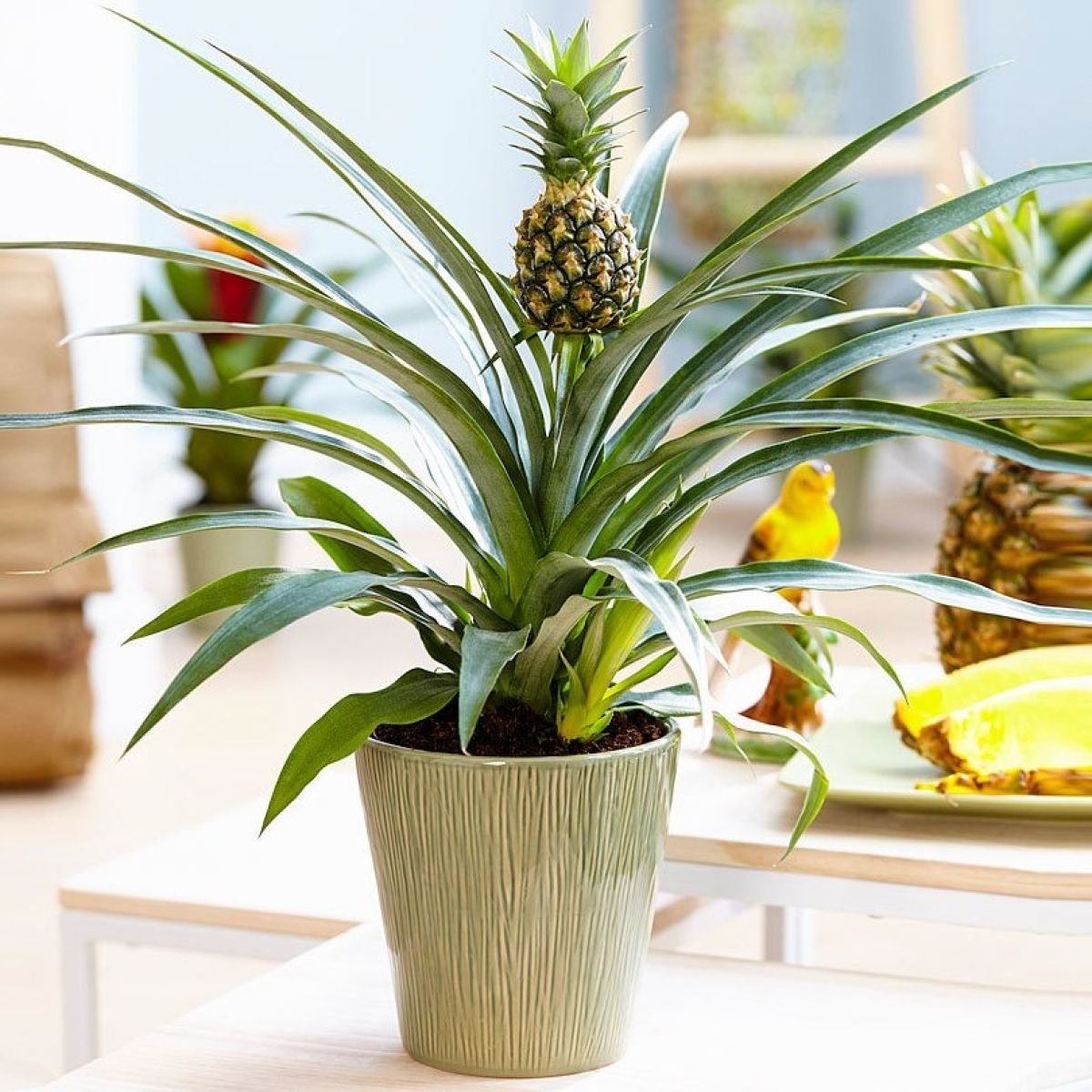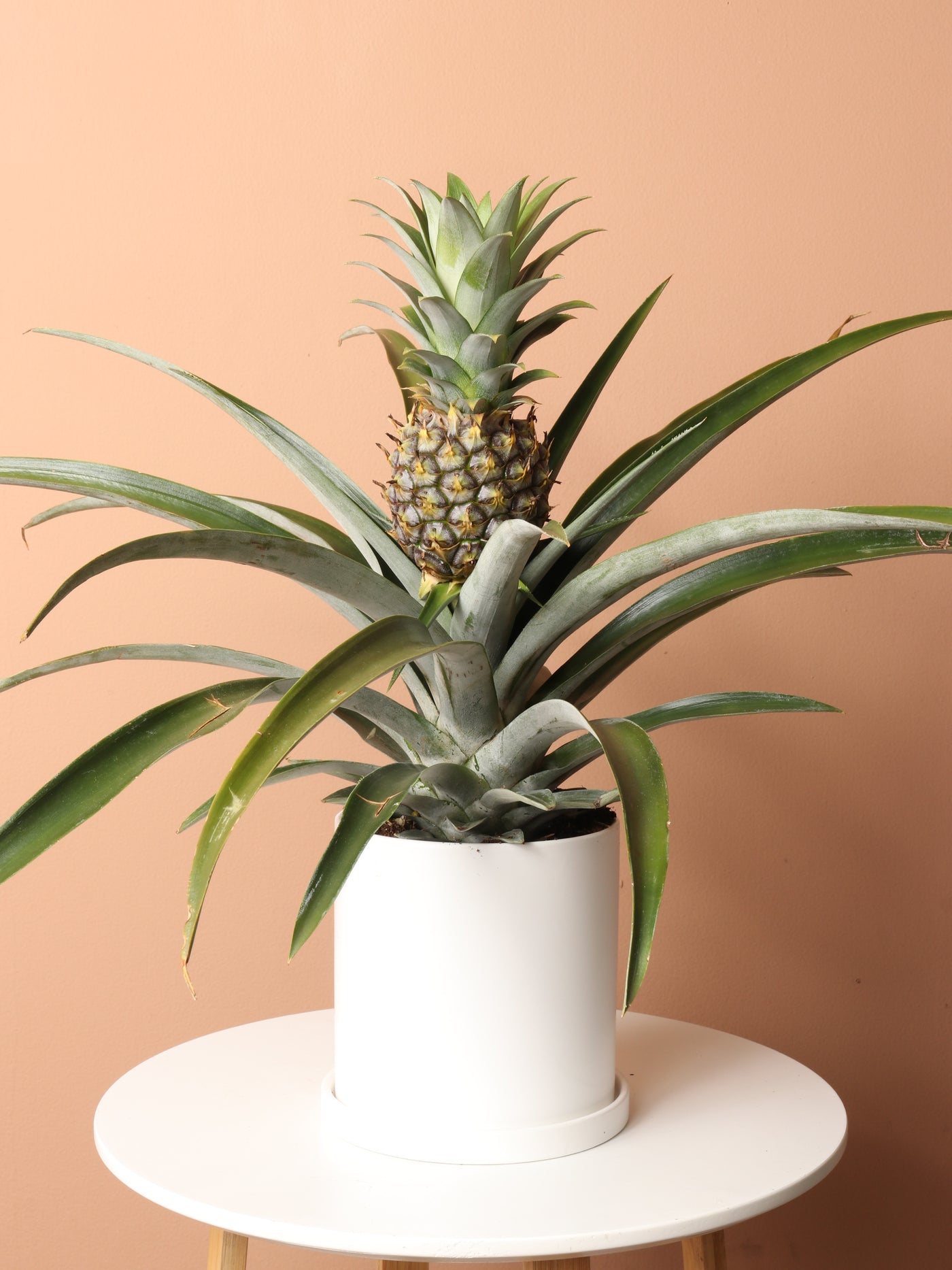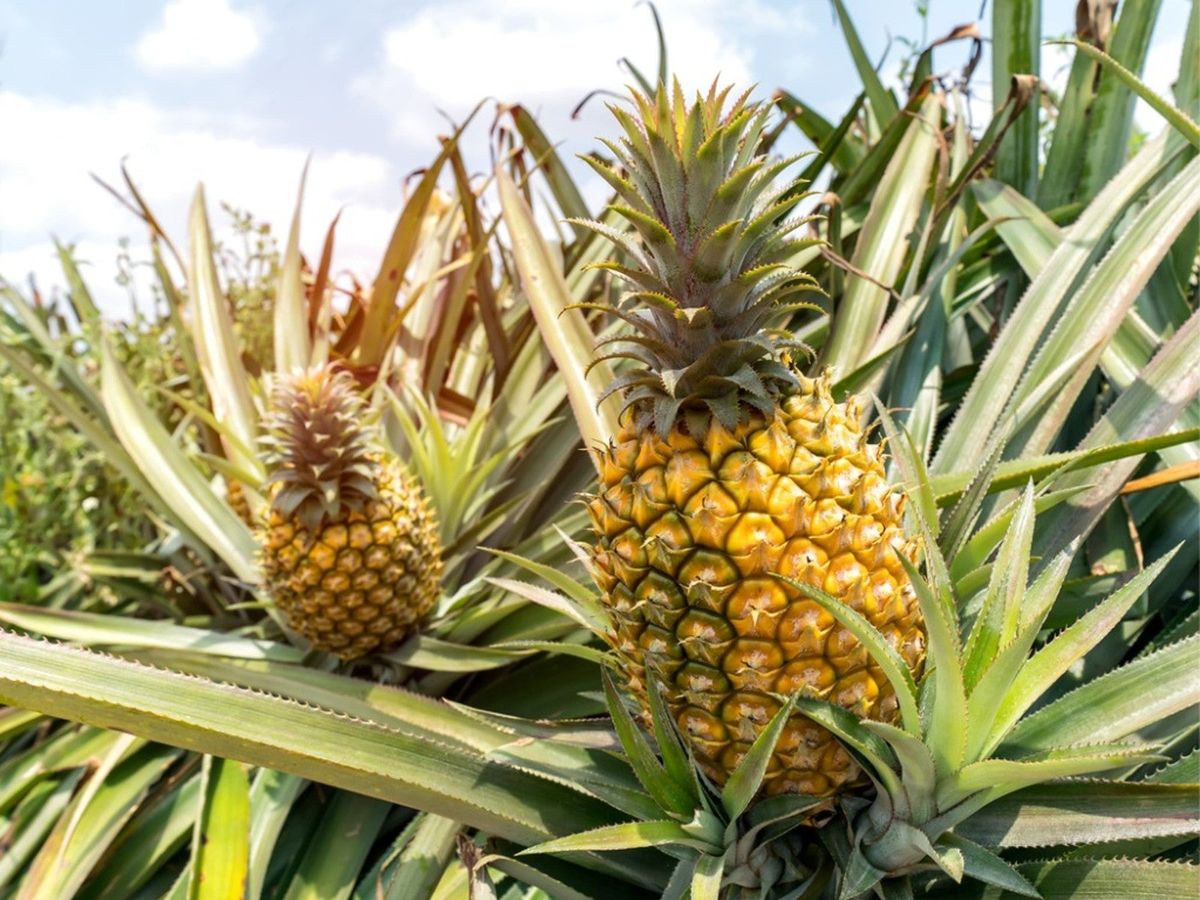The Pineapple Plant: A Tropical Treasure
The pineapple plant, scientifically known as Ananas comosus, is a tropical fruit that has been cultivated for centuries. Native to South America, specifically Paraguay and southern Brazil, pineapples have become a popular and versatile fruit enjoyed worldwide.
A Brief History of Pineapples

The history of pineapples is intertwined with the exploration and colonization of the Americas. Spanish conquistadors introduced pineapples to Europe in the 16th century, where they were highly prized as exotic delicacies. Due to their high cost and rarity, pineapples were often displayed as symbols of wealth and status.
Botanical Characteristics of Pineapple Plants
Pineapple plants are herbaceous, meaning they lack woody stems. They grow in a rosette pattern, with long, narrow leaves that are typically green with a reddish-purple tinge. The fruit, which develops at the center of the plant, is a multiple fruit composed of numerous individual fruits fused together.

Cultivation and Growth Conditions
Pineapples are tropical plants that thrive in warm, humid climates. They require well-drained soil and plenty of sunlight. Commercial pineapple cultivation is typically carried out in large plantations, where irrigation systems are used to provide adequate water during dry periods.
The Pineapple Fruit: A Nutritional Powerhouse

Pineapple fruit is rich in nutrients and antioxidants. It is a good source of vitamins A, C, and B1, as well as minerals like manganese and copper. Pineapples also contain bromelain, an enzyme that aids in digestion.
Culinary Uses of Pineapples
Pineapples are highly versatile fruits with numerous culinary applications. They can be eaten fresh, juiced, or used in various dishes. Pineapple is a common ingredient in tropical cocktails, desserts, and savory dishes like pork or chicken.
Pineapple Leaves: A Surprising Use
While the fruit is the most commonly used part of the pineapple plant, the leaves also have practical applications. Pineapple leaf fibers can be used to make textiles, such as clothing and accessories.
Conclusion
The pineapple plant is a fascinating and economically important tropical fruit. Its history, cultivation, nutritional value, and culinary versatility have made it a beloved crop worldwide. As research continues to explore the potential benefits of pineapples, it is likely that this fruit will remain a valuable part of our diets for many years to come.
FAQs
What is the difference between a pineapple and a kiwi?
While both pineapple and kiwi are tropical fruits, they belong to different botanical families. Pineapples are members of the Bromeliaceae family, while kiwis are members of the Actinidiaceae family. They also have distinct flavors and textures.
How long does it take for a pineapple plant to bear fruit?
Pineapple plants typically take 18 to 24 months to produce their first fruit. Once they start bearing fruit, they can continue to produce for several years.
Can pineapple plants be grown indoors?
Yes, pineapple plants can be grown indoors with proper care. They require bright, indirect light and warm temperatures. However, indoor-grown pineapples may not produce fruit as reliably as those grown outdoors.
Are pineapples high in sugar?
Yes, pineapples are a good source of natural sugars. However, they also contain fiber and other nutrients that can help balance the sugar content.
What is the best way to store a pineapple?
To store a pineapple, place it upright in a cool, dry location. Avoid storing it in the refrigerator, as this can cause the fruit to become discolored or mushy.